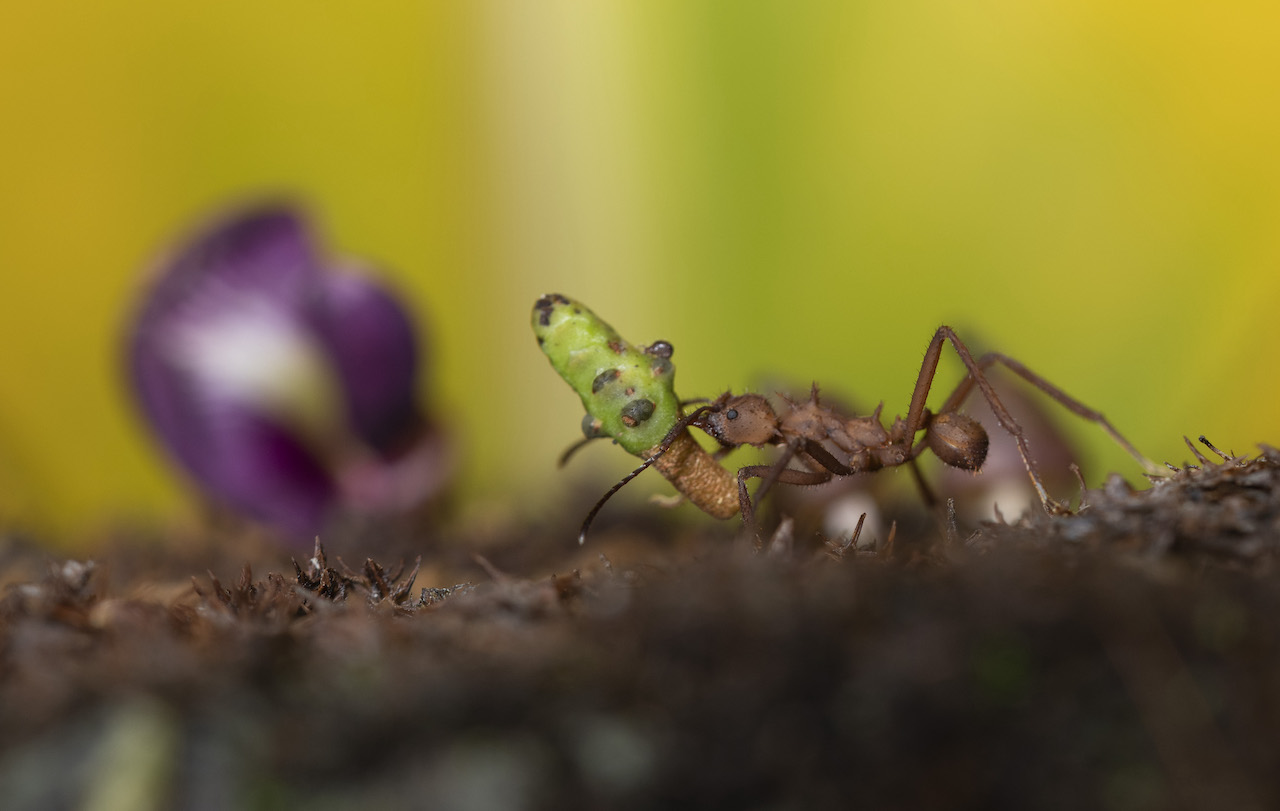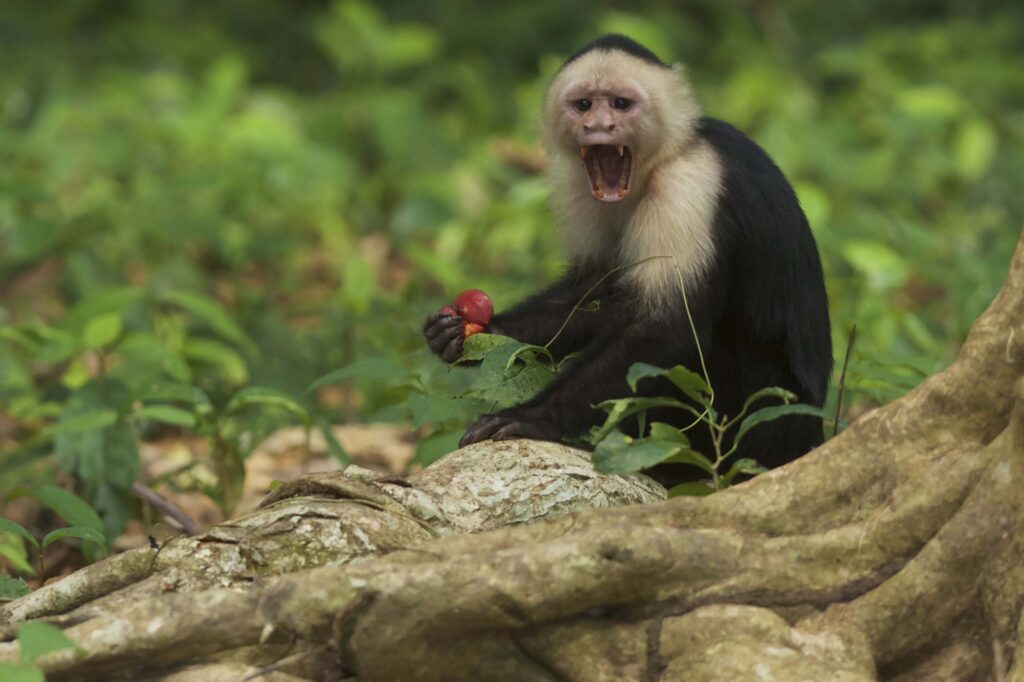The birds and their allies

Birds & Ants.
It is impressive to see when large groups of Army ants or leaf-cutter ants moving along in the forest, scaring away spiders, cockroaches, crickets, grasshoppers, lizards, and frogs, among others; prey that are delicacies for birds.
Birds are also related to insects; certain species remain invertebrates such as ants. The most recognized cases are those of the birds that are commonly called anteaters (families Thamnophilidae and Formicariidae) and climbers (family Furnariidae) who accompany the army ants (Eciton burchelli). It is impressive to see when large groups of army ants advance in the forest, scaring away spiders, cockroaches, crickets, grasshoppers, lizards, and frogs, among others; prey that are delicacies for birds. There are species that are occasional followers, but there are others that are faithful, called by some «professional followers»: the spotted anteater (Hylophylax naevioides), the bicoloured anteater (Gymnopithys bicolor), the ocellated anteater (Phaenostictus mcleannani) and the Northern barred woodcreeper ( Dendrocolaptes sanctithomae).

Birds and Mammals.
Birds take advantage of the fact that as cattle move to feed, many insects are scared away in their path, allowing them to catch these invertebrates more easily.
Some very common examples: how many times have we observed a groove-billed Ani (Crotophaga sulcirostris) or a cattle egret (Bubulcus ibis) behind cattle in a pasture? But do you know why they hang out with them? This relationship is due to the fact that both birds take advantage of the fact that as the cattle move to feed, many insects are scared away in their path, allowing the groove-billed anies and egrets to catch these invertebrates more easily.
Other lesser-known cases have been reported in which the avifauna follows mammals, such as the relationships between certain birds and monkeys. Species such as the Double-tooth Kite (Harpagus bidentatus), the grey-headed tanager (Eucometis penicillata) and the Tawny-winged woodcreeper (Dendrocincla anabatina) have been reported following squirrel monkeys (Saimiri oerstedii) and less frequently white-faced monkeys (Cebus imitator) both in the Park Corcovado National as in the Manuel Antonio National Park. During the passage of the monkeys, invertebrates and small mammals are scared away, and are taken advantage of by the birds.
The birds, through pecking, capture the ectoparasites that live on the skin of these mammals; on the one hand, the birds get food and on the other, the mammals get rid of annoying parasites.
Just as there are relationships in which one species benefits and the other is neither harmed nor benefited (called commensalism), there are relationships between birds and mammals of a mutualistic type (both species benefit) such as between the white-throated magpie jay (Calocitta formosa). and white-tailed deer (Odocoileus virginianus), or between yellow-headed caracaras (Milvago chimachima) and tapirs (Tapirus bairdii).
In these relationships, the birds, through pecking, capture the ectoparasites that live on the skin of these mammals; on the one hand, the birds get food and on the other, the mammals get rid of annoying parasites.
Benefits
Many of these species have greater success in capturing food next to these «companions», for example, studies carried out with cattle herons compare their foraging success alone or with cattle, when joining cattle they capture more prey with less effort. With these associations, the species have greater success in capturing food, for example, studies carried out with cattle herons where they compare their foraging success alone or with cattle, allowed to determine that by joining cattle they capture more prey with less effort, in this way they obtain good food that exceeds (in energy terms) the costs generated in obtaining it.
Behaviours such as the above and others contribute to the natural history of the species. So the next time you’re out in the field, be careful, as you might be lucky enough to witness one of these interesting relationships.
